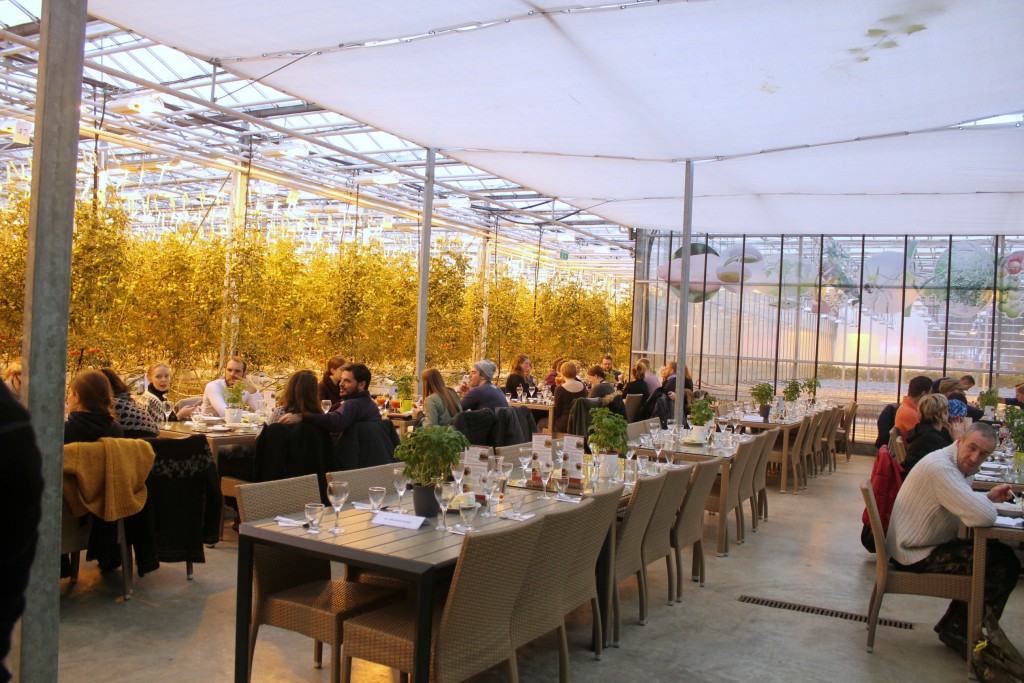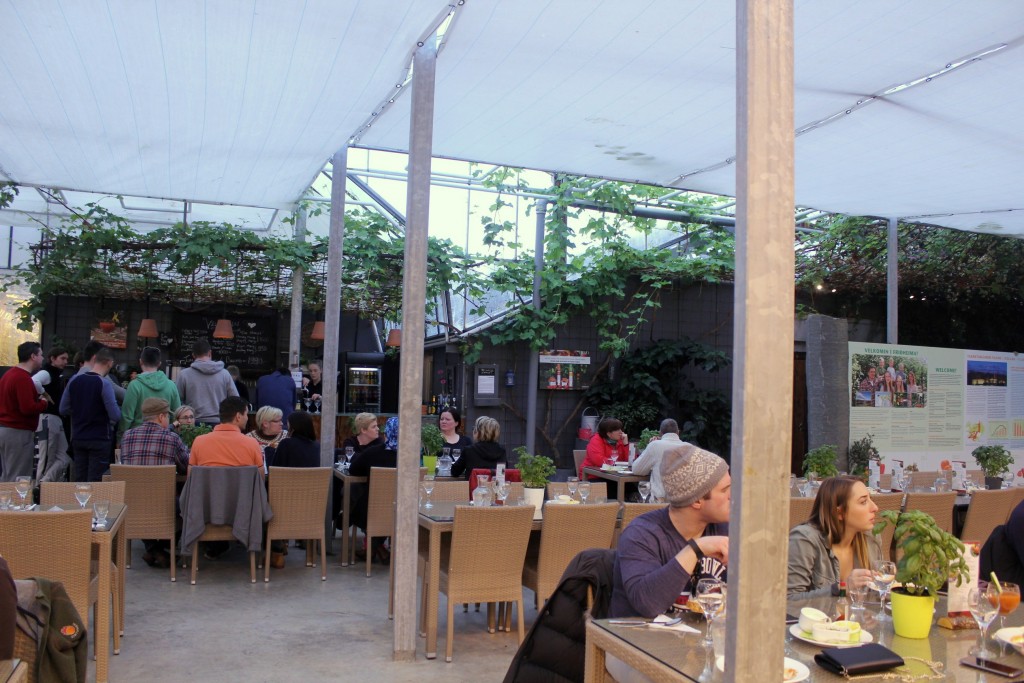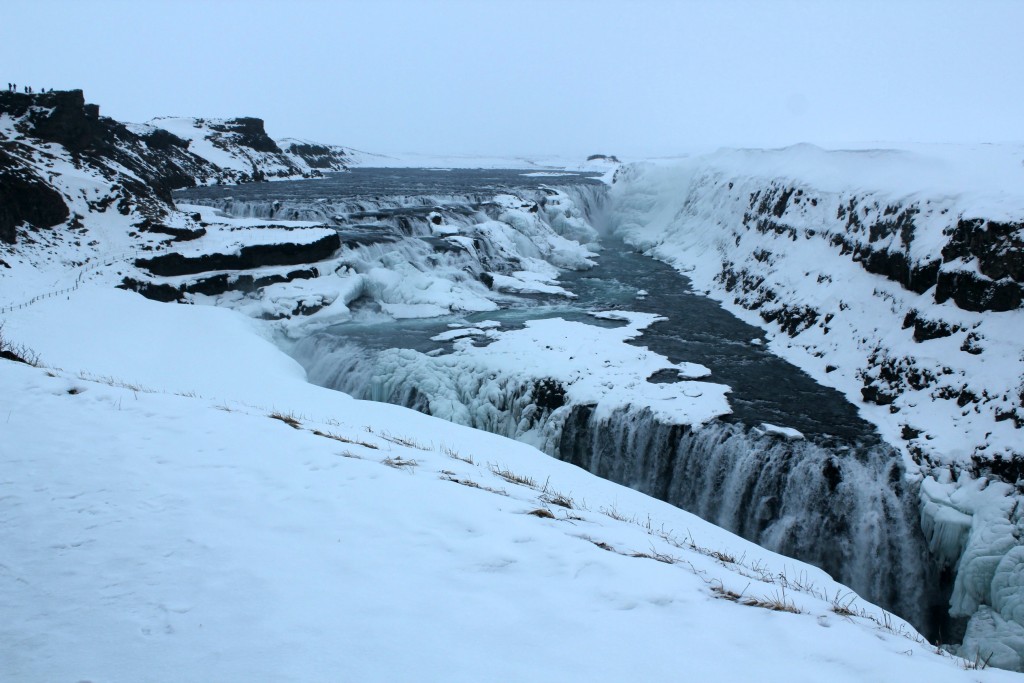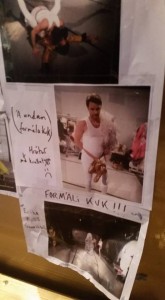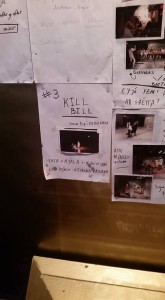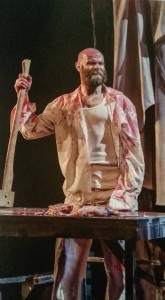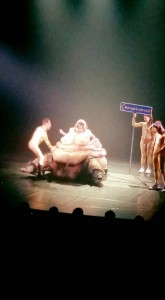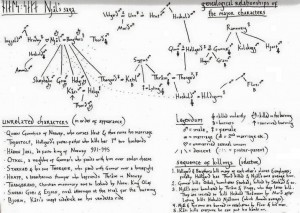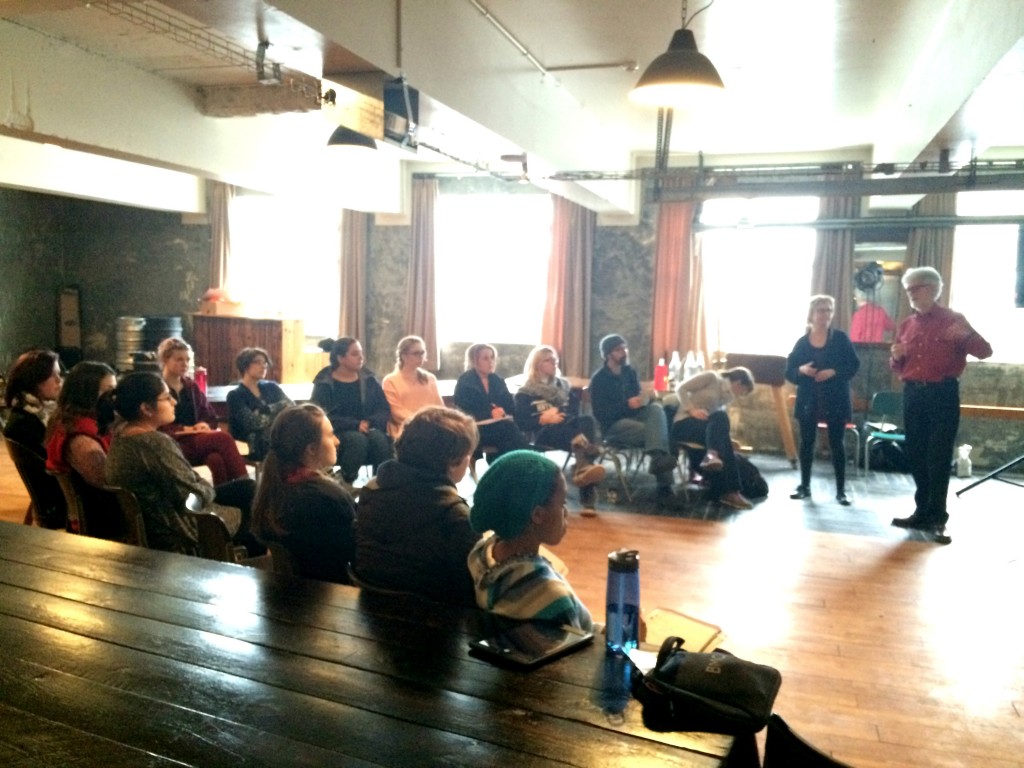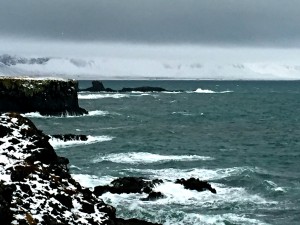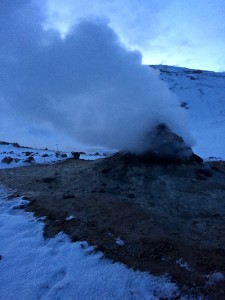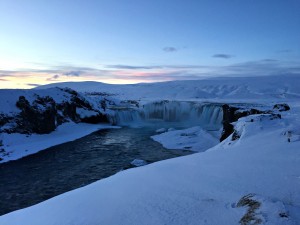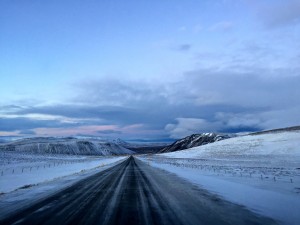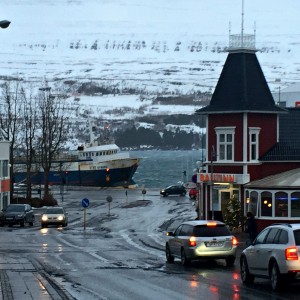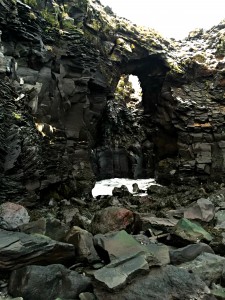This place is breathtaking—it’s almost worthless to write that, it’s so inadequate to describe the awe-inspiring landscape we’ve been exploring all week.
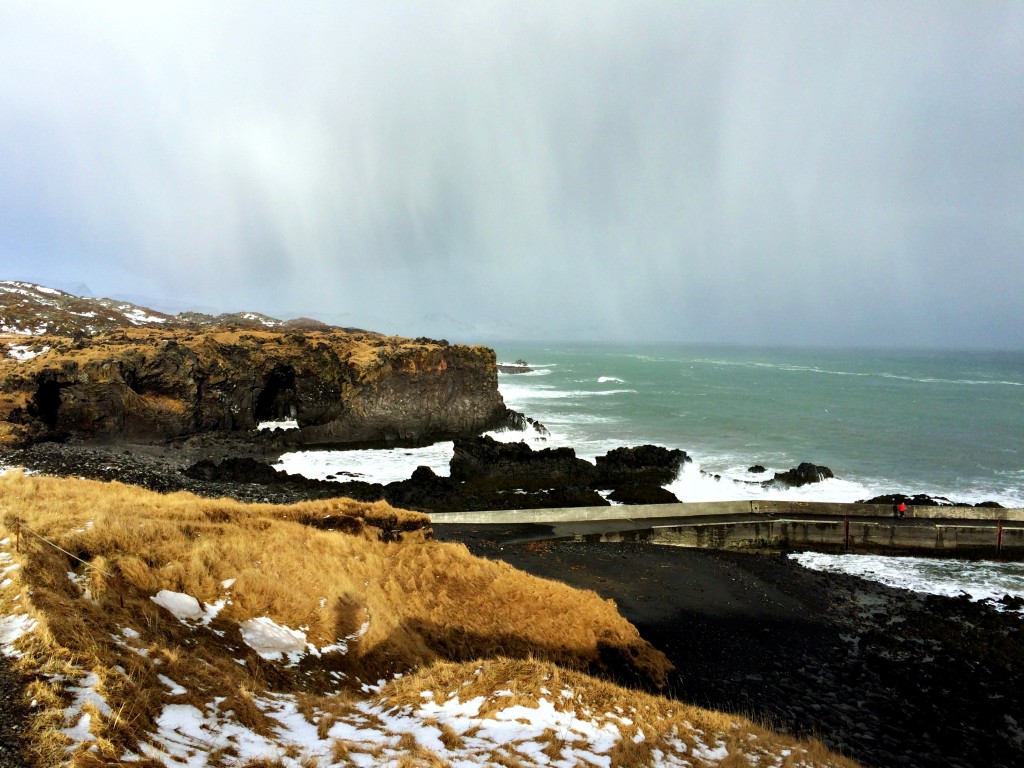
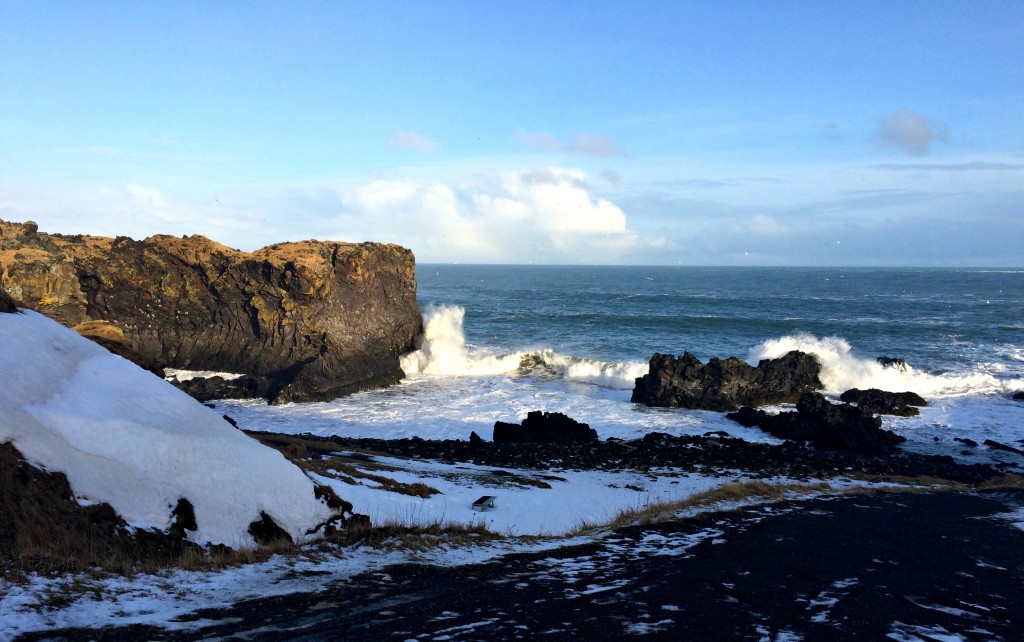
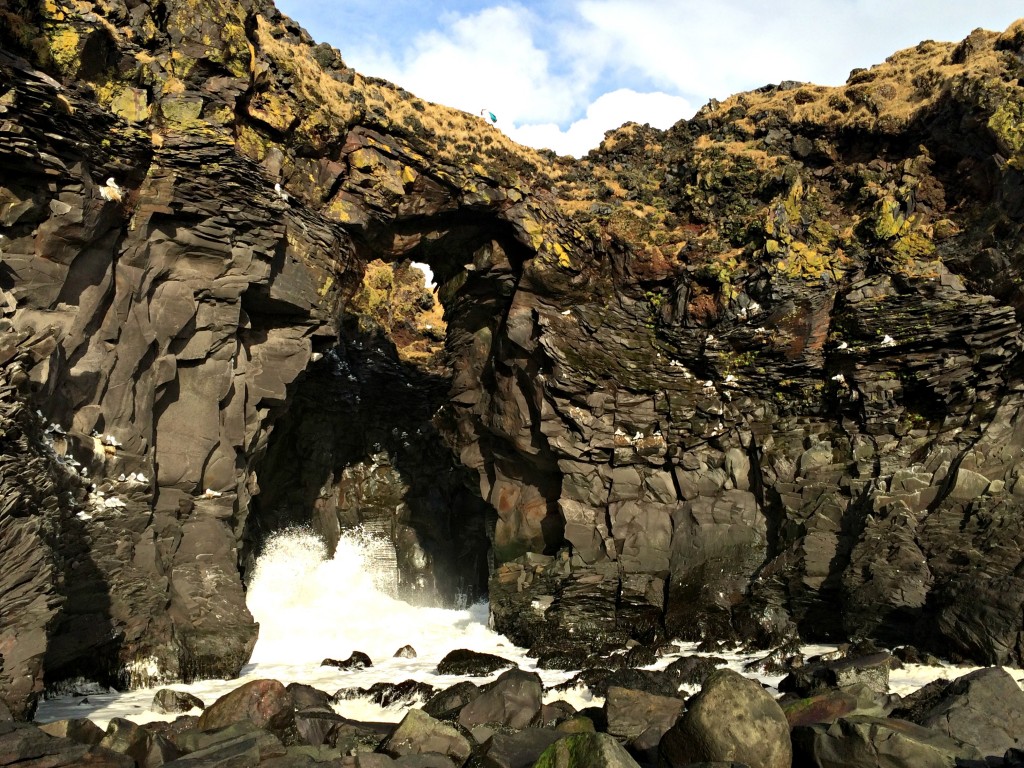
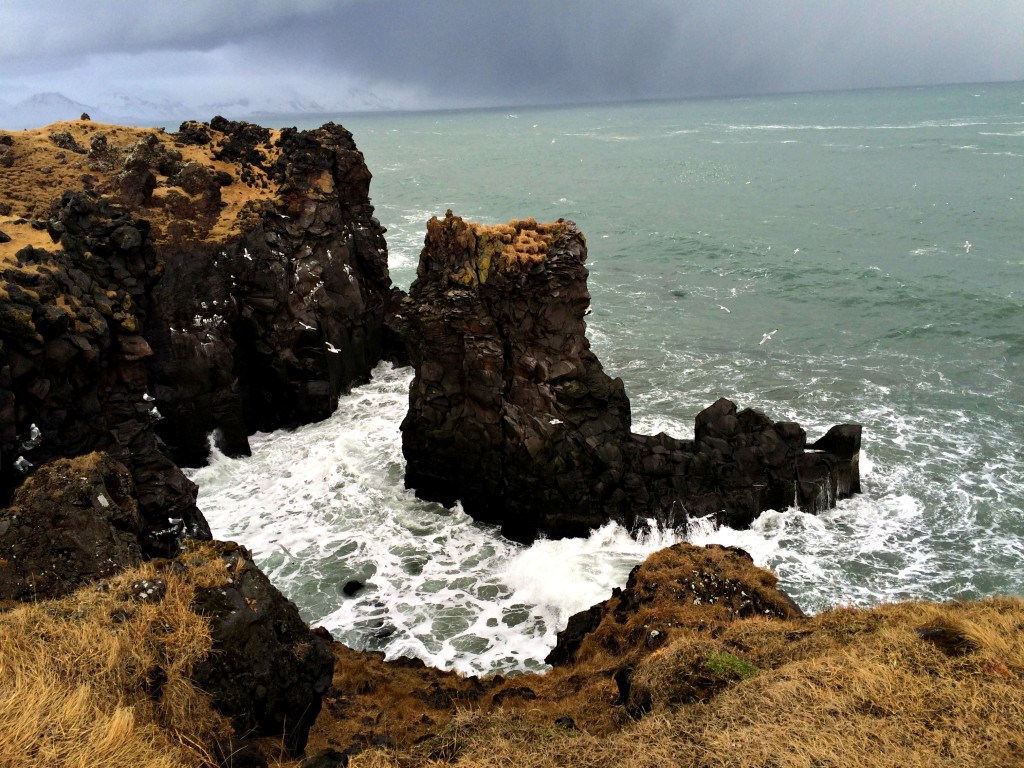
Right now, there’s a severe storm all over the country—wild winds (almost hurricane force), intermittent sleet and freezing rain yesterday, and today just loads of rain.
Since Friday, we’ve been tucked up at The Freezer, a (fantastic) hostel and theater/performance space on the tip of the Snaefellsnes Peninsula, in Western Iceland. Imagine us at one of the tips of the western edge of the island, sticking out into the North Atlantic Ocean as a storm rages.
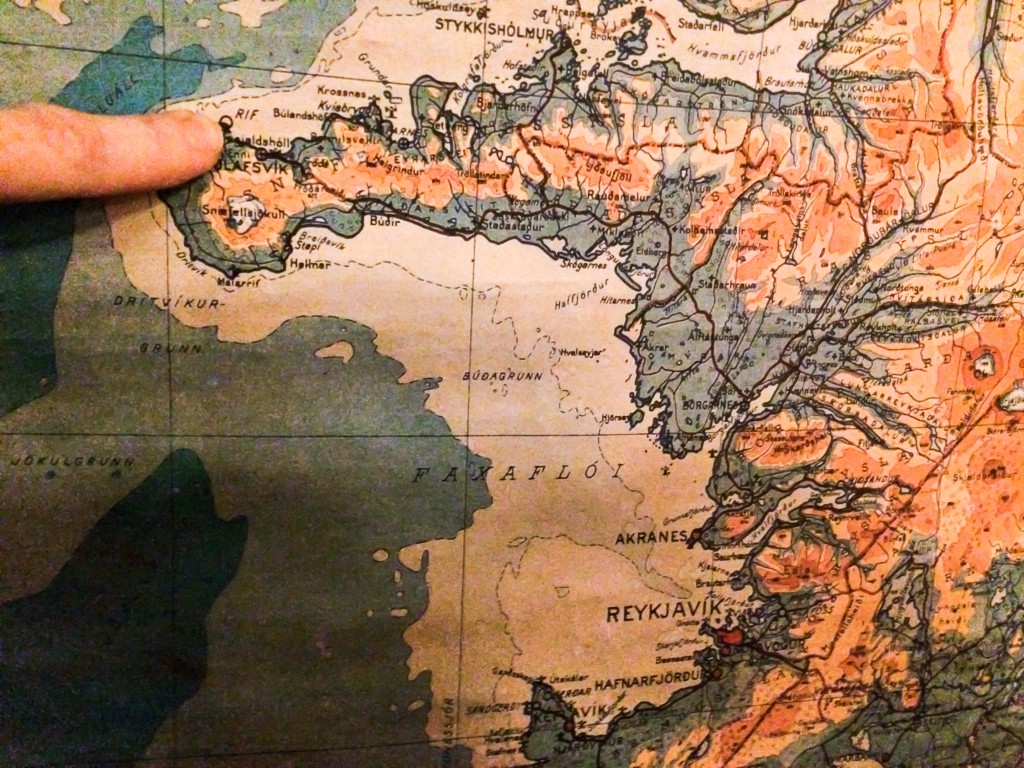
Conditions couldn’t be more appropriate for King Lear. The sound of the wind around the building (an old , concrete fish processing plant that’s been made terrifically cozy in its new life) is ferocious—loud enough at times to make us feel that our Lear really is wandering in the wildness and wind, even when we’re inside.
At one point, several of us—Catharine, Katie, and Roz (King Lear, Kent, and the Fool), Maya (our assistant director) and I—ventured out to rehearse the storm scene in the storm, to see what that was like.

The wind was brutal, but also gorgeous and invigorating—so strong we could lean back or forward into it and be held up by it for more seconds at a time than would have seemed possible if we weren’t actually experiencing it. It was breathtaking in the most literal sense—Maya said to me that it was a strange feeling not to need to inhale, because if you were facing into the wind and opened your mouth, the air found its way into your lungs with no assistance.
We walked out to the sea wall in this tiny old fishing village, and we climbed it to watch the dark sea whipping wildly up to the edge of the rocks. We found our way up a grassy hill to a place where the lava rock formed tide pools, and we could see the giant boulder-pebbles of the “beach” below us.* We ran the storm scene there, Act 3 Scene 2: “Blow, winds, and crack your cheeks! Rage, blow!”

The first time we ran the scene (actually, that was back in front of the hostel, when we first got outside), something about the intensity of the storm and the work of the actors combined was powerful enough to make me almost cry. (Admittedly, this is not a difficult state to induce in me, especially out in nature.)
Still: The way that Lear alternates between rageful bluster and the deflated, exhausted demeanor of an old man, drenched and winded by the storm and realizing that he’s losing his wits; the Fool’s tenderness and concern for Lear; Kent’s care for both Lear and the Fool, even after Lear’s betrayal of him. The sense that the wind might actually knock you down or set you aloft at any moment; the feeling of sleet blowing so hard and fast into your face that it feels like tiny needles being shot at your skin. All of it together = me, all choked up.
Walking back, we were heading into the wind, far more exhausting and disorienting than on the way out. And then, as we labored to cover the very short distance back to the hostel, we spent a moment leaning into the wind again, when I noticed that it was actually holding us up for too long, somehow, and it started to feel more dangerous than it had in the first twenty minutes or so that we were out. The wind picked up so quickly—there was no time to notice it happening, it was just suddenly that much stronger.
We made it back without a problem, of course, just really tired. Maya remarked to me that she could see why Lear was so exhausted out in the storm.
While we’ve been here, we’ve been taking turns making dinner for the whole group of us. That’s been fun, and delicious, if challenging in a wee hostel kitchen with minimal cooking equipment.
The hostel has provided us with food for breakfast (at an extra cost), and we’ve been starting each morning in communal kitchen chaos before rehearsal begins around 10:00am. I’ve been spreading the food out on the kitchen table, and everyone crowds in, pouring bowls of cereal, or making toast, or gathering salami and cheese and eggs and vegetables on plates. There’s coffee and juice and a too-large crowd, and it’s a cheerful way to start the morning all together.
Yesterday I tried to make a banana cake that I’ve made many times now, because we had a number of bananas that were past their prime. Between using an unfamiliar gluten-free baking mix, approximating measurements (no measuring utensils at the hostel), converting some of the measurements from tablespoons to grams (the butter!), and using a European oven with temperatures marked in Celsius and a mysterious knob that seems to control the portions of the oven where the heat is centered (maybe? I still don’t really know)…let’s just say the cake was very tasty, and very…not what I was aiming for. Happily, college students are remarkably forgiving when you’re making them snacks.
After dinner last evening, we had a brief rehearsal, after decking out the theater space with every candle we could find. We ran through a large chunk of Act 3, all in candlelight, with the chair and fishing net hovel several of the actors built out of whatever they could find around the space.
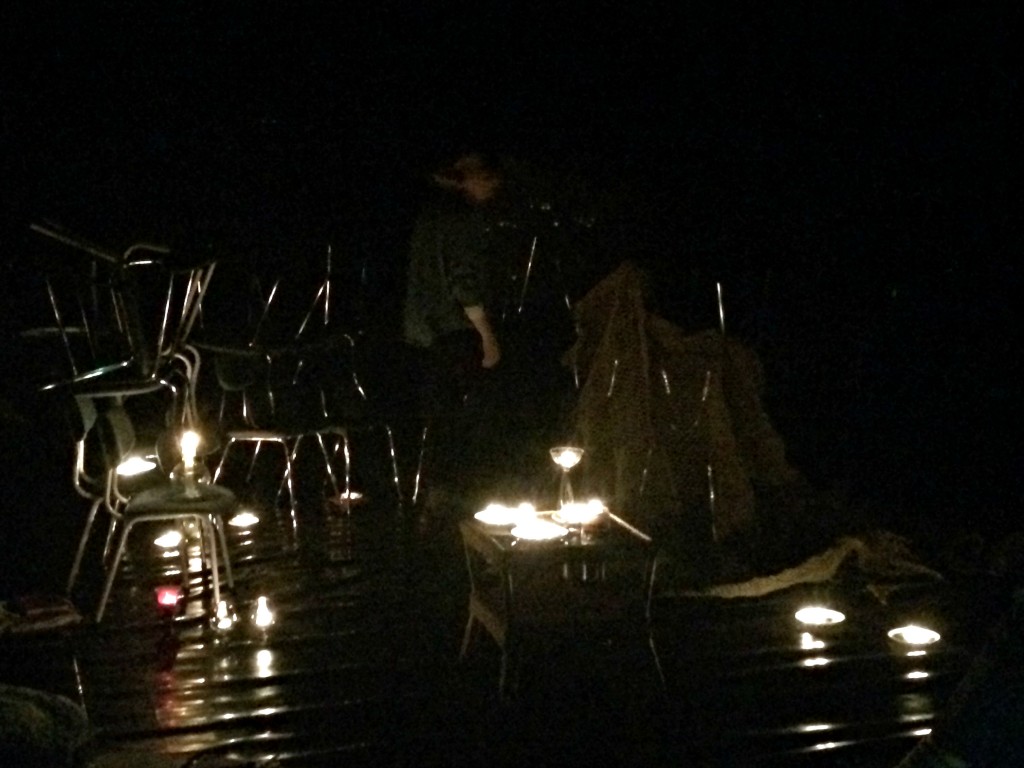
Once rehearsal was through for the day, Kate found a beaten-up old guitar, and we gathered together and sang for a while. By candlelight again, of course.
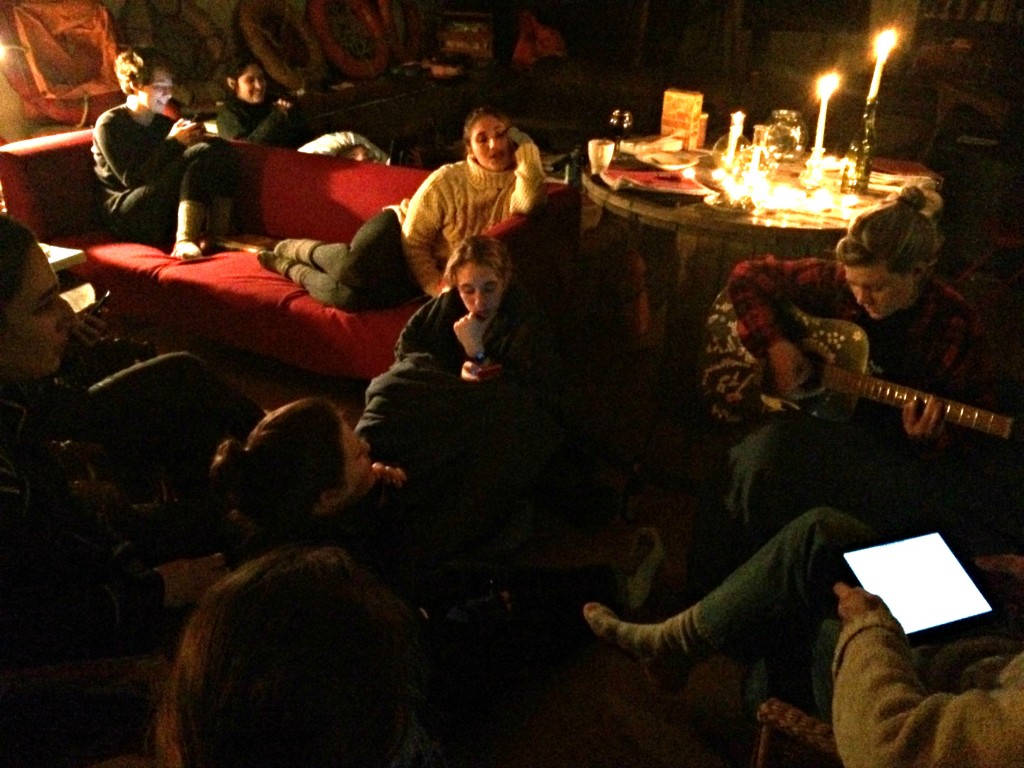
Mark noticed that the sky seemed clear, and the wind had died down a lot, so he and Catharine bundled up and went out to scout for Northern Lights. They called us out after them when they saw some, but it took us too long to get all of our gear on and get down to the sea wall, and the lights had ended by the time we got there.
No matter though—the sea was beautiful and wild in the dark and the wind, and some sort of birds were gathered on the water and wheeling through the night sky, and the Big Dipper was bright and clear above us to the right. I have this memory of standing on a cliff along the Pacific Coast Highway in California, overlooking the beautiful, wild, dark ocean and freezing in the coastal wind, while the Big Dipper hung over a mountain to my right, and a cluster of lights from San Francisco were visible far down the coast to my left. And standing on the sea wall in a tiny fishing village in the west of Iceland, windblown, cold, staring up at the same Big Dipper, I thought about how enormous and strange and incredibly beautiful the world is.
* These boulder-pebbles—I don’t know how else to describe them exactly—are an apparently standard feature of the coast here in Iceland. We first saw them a few days back, along the Reykjanes Peninusula. They’re rounded and smooth the way pebbles are, but enormous, all piled along the beach, thousands of them. They are, on average, a foot to a foot and a half in diameter? Enormous, and I can’t imagine how much they must weigh. When you walk over them, you have to be cautious, because you could easily lose your footing and twist an ankle in the space between them, but also because a rock will occasionally move, not as tightly packed into its fellow rocks as it appeared, and it would be easy to fall entirely.

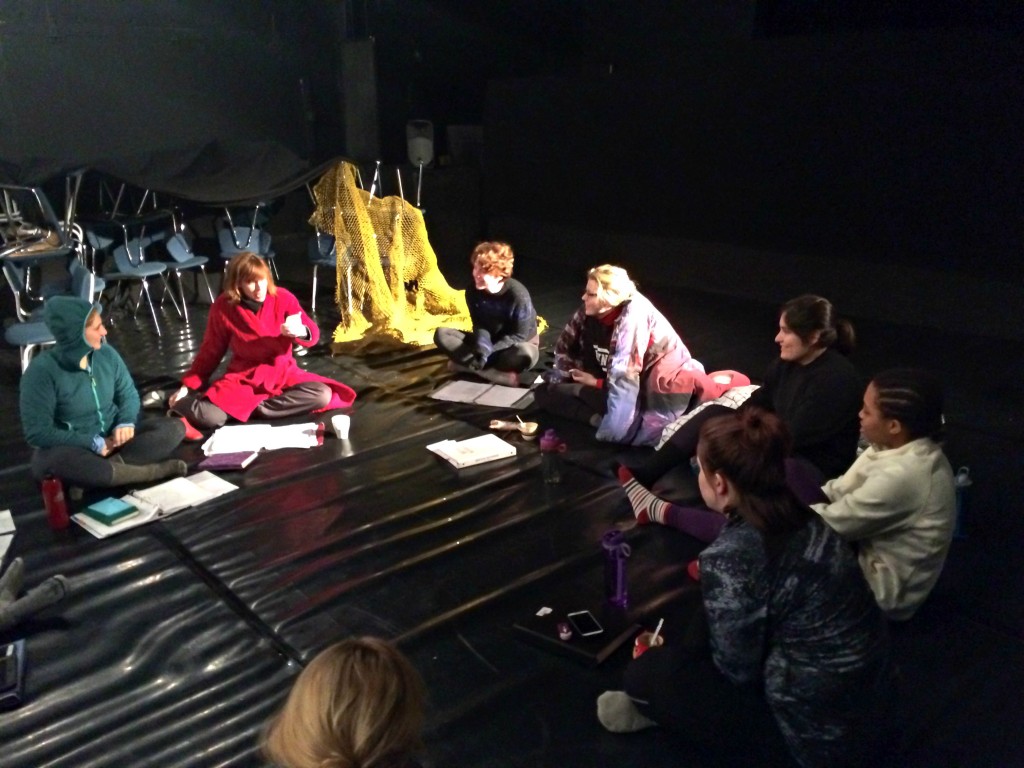
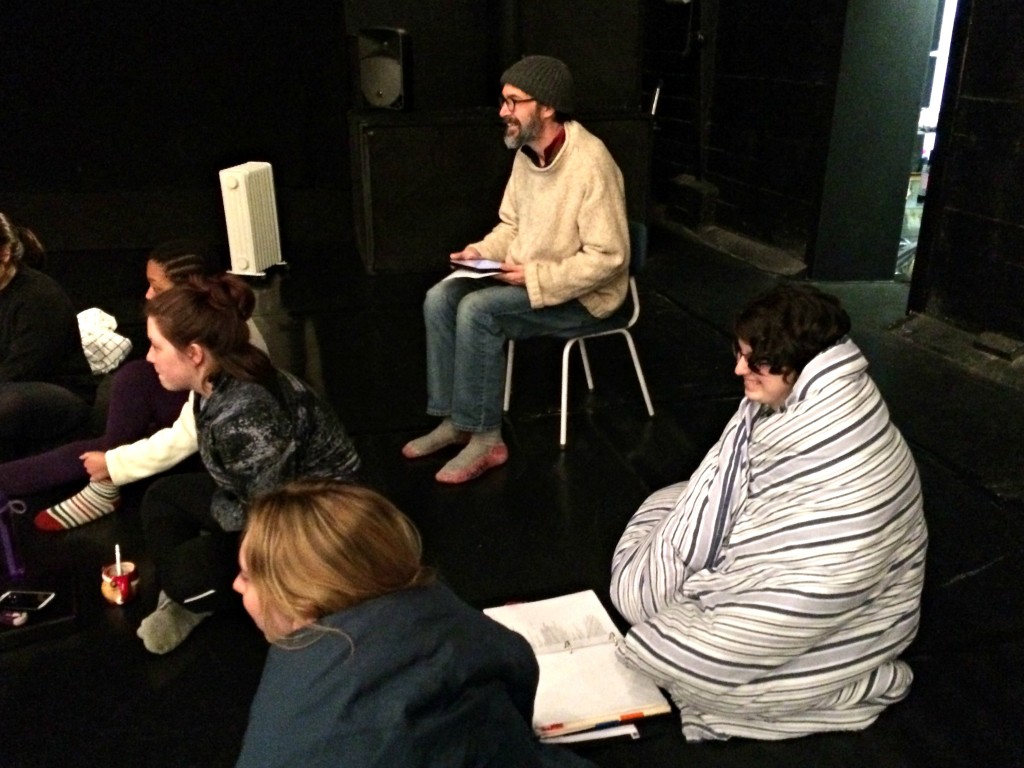
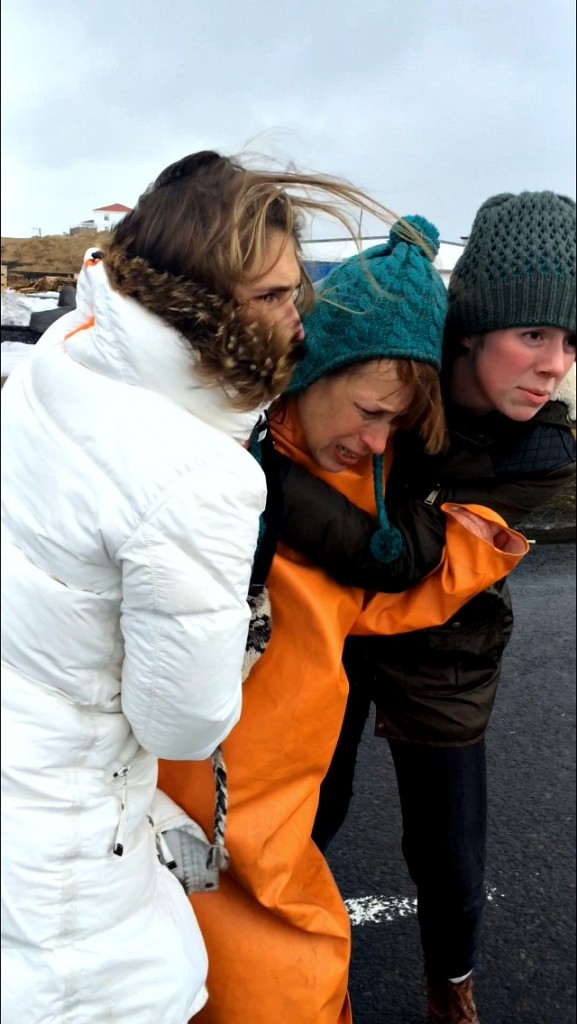
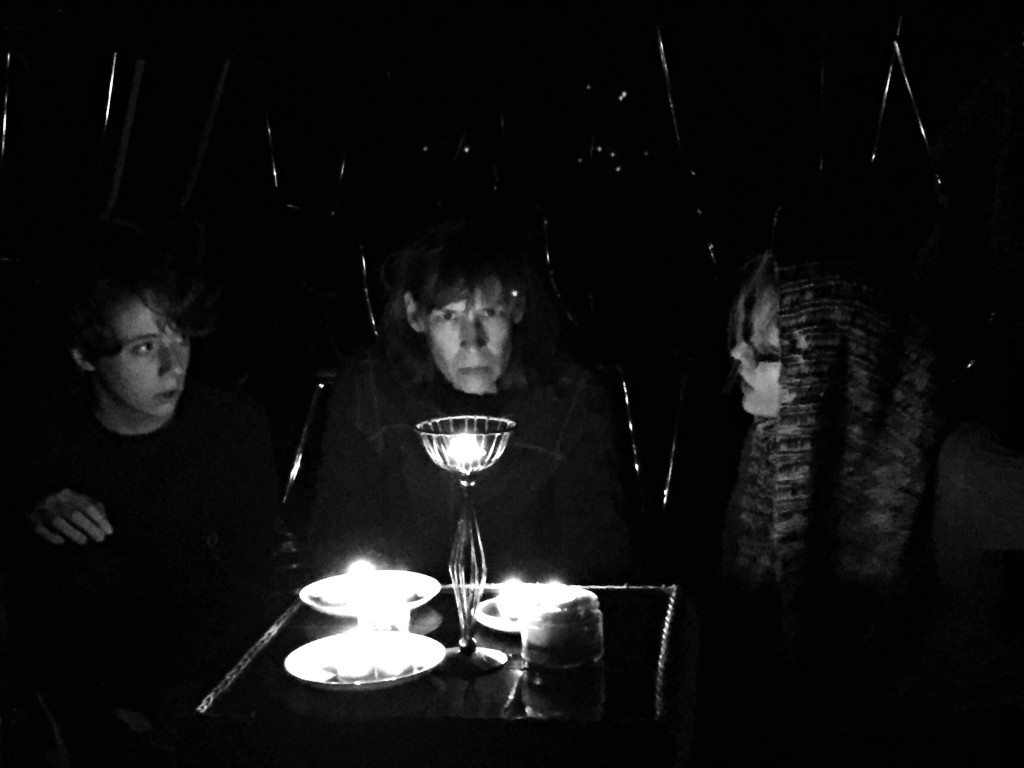

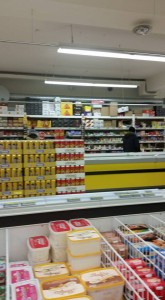
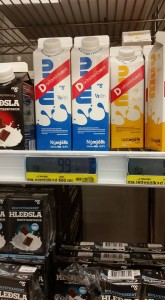
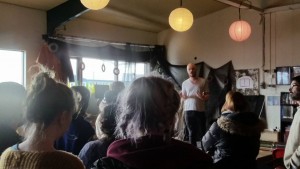

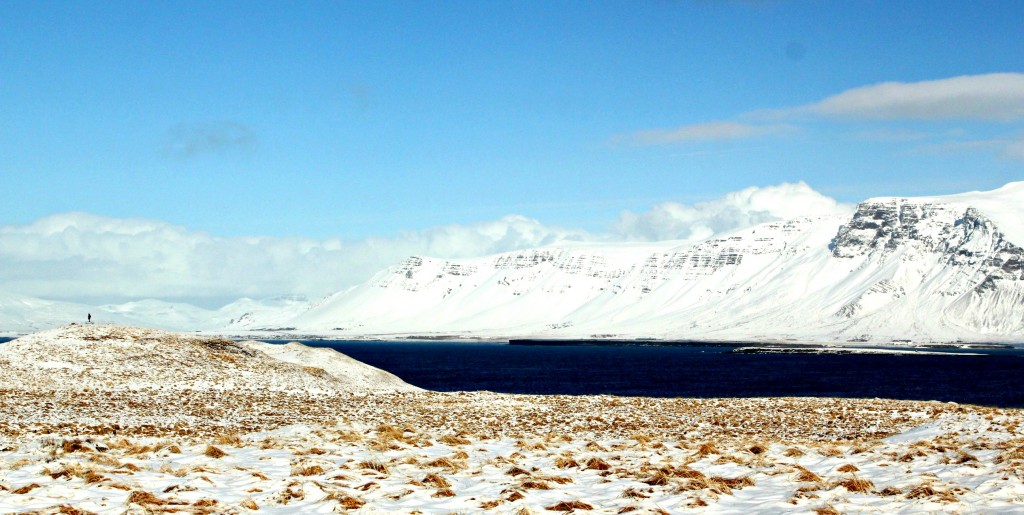
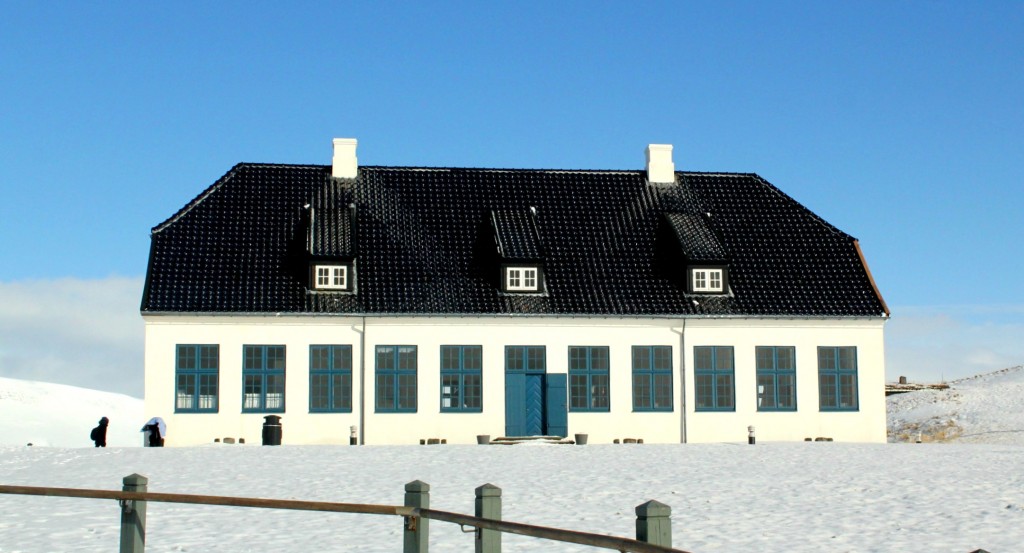
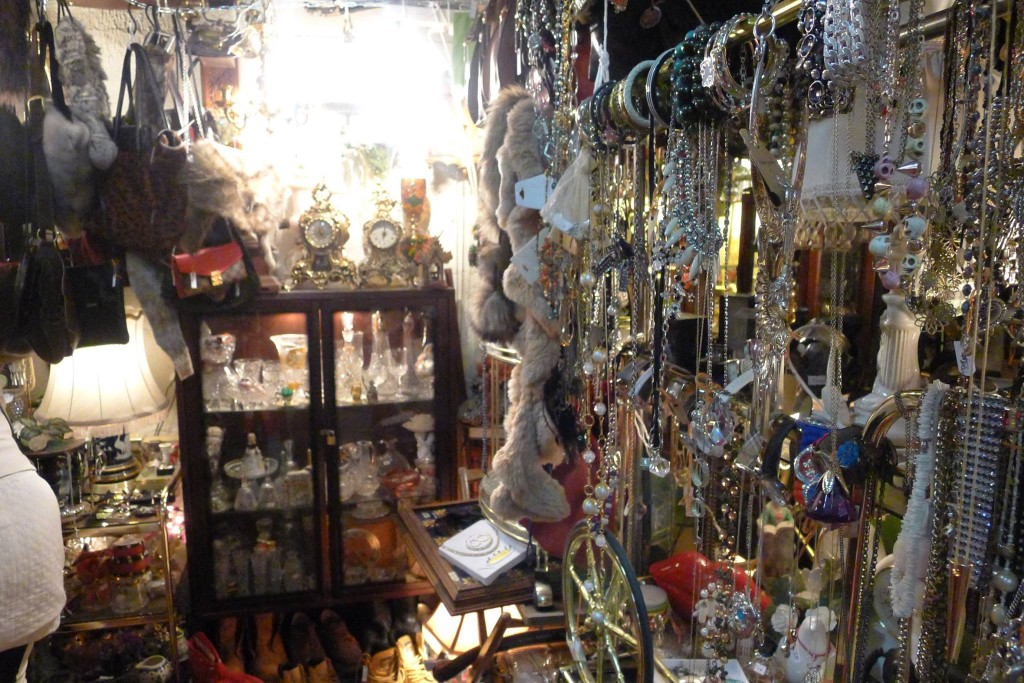 My personal favorite find was the Icelandic romance novels–I guess some things are universal!
My personal favorite find was the Icelandic romance novels–I guess some things are universal!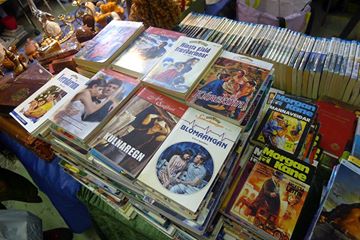 On our way back to the hostel, we stumbled upon the famous Bæjarins Beztu Pylsur hot dog stand. Amelia
On our way back to the hostel, we stumbled upon the famous Bæjarins Beztu Pylsur hot dog stand. Amelia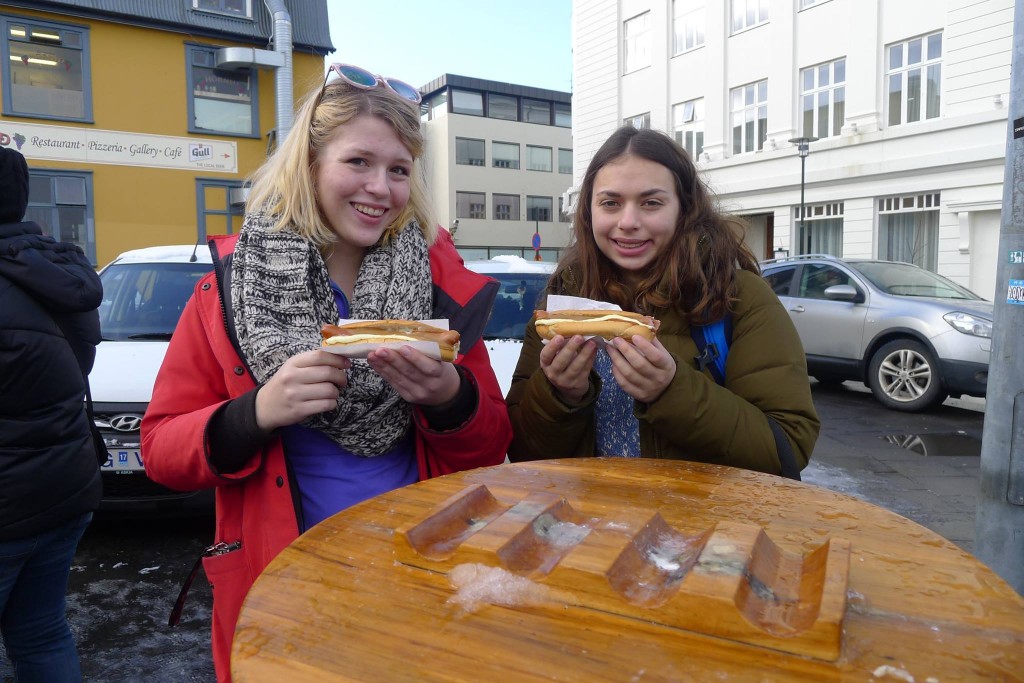
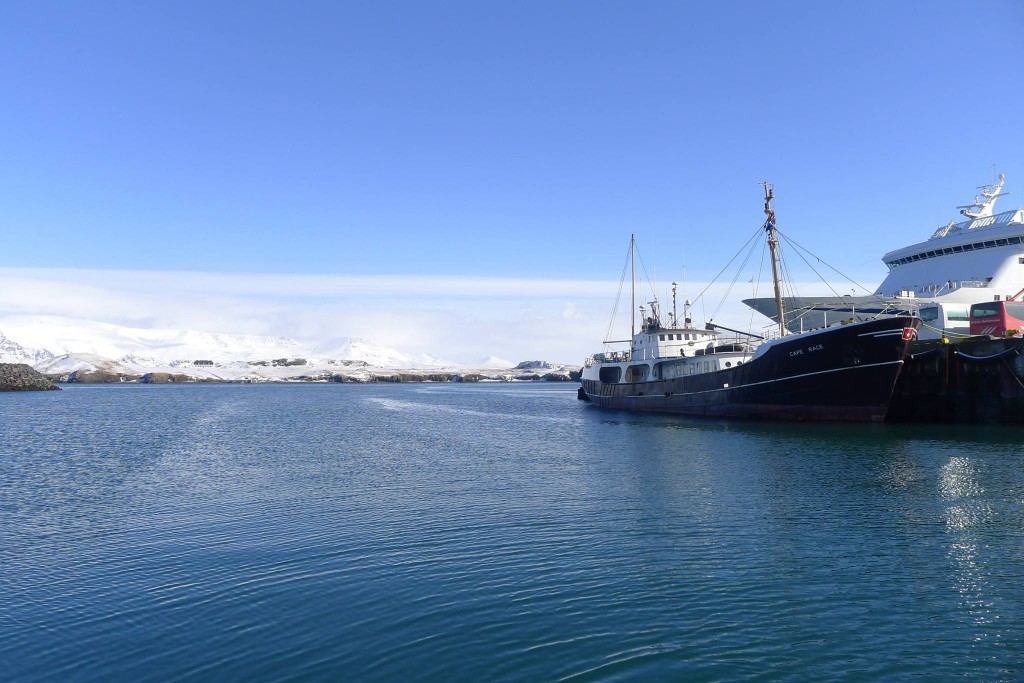
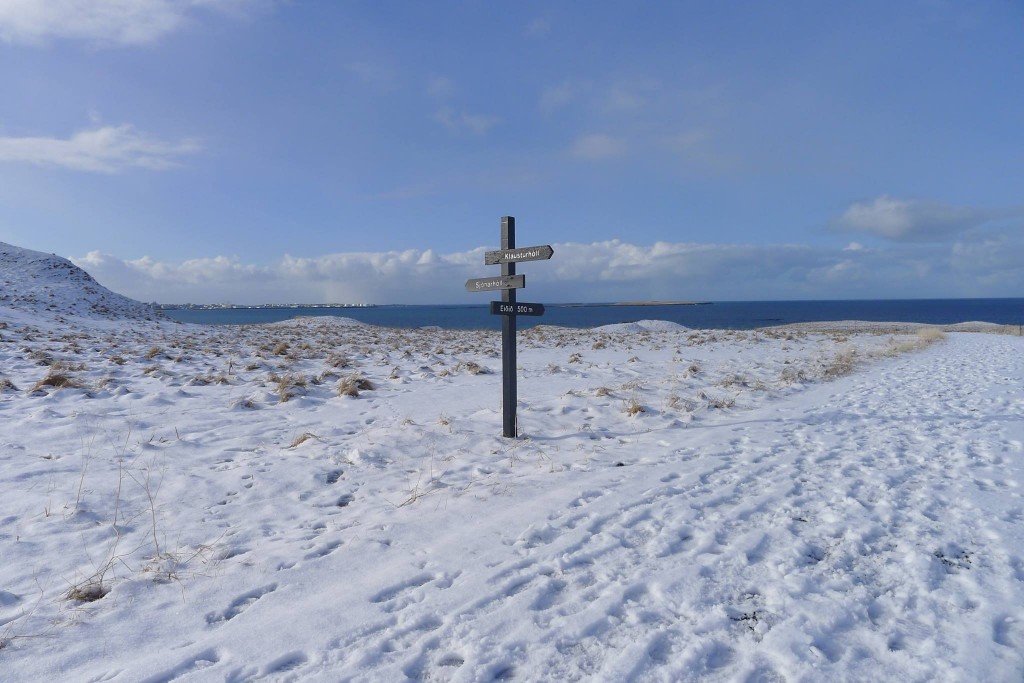
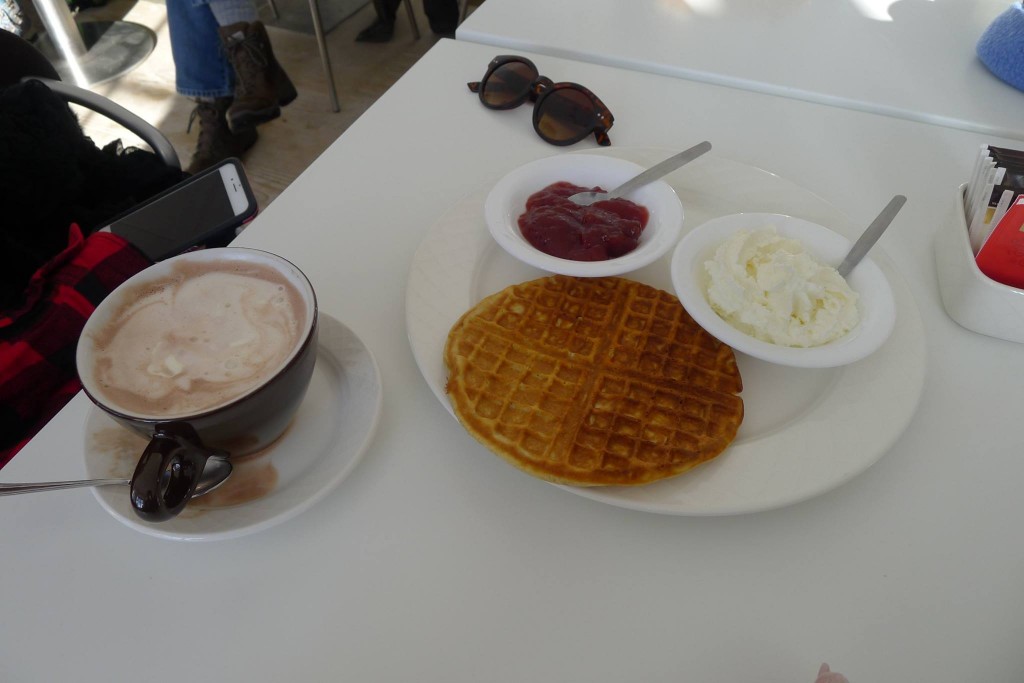
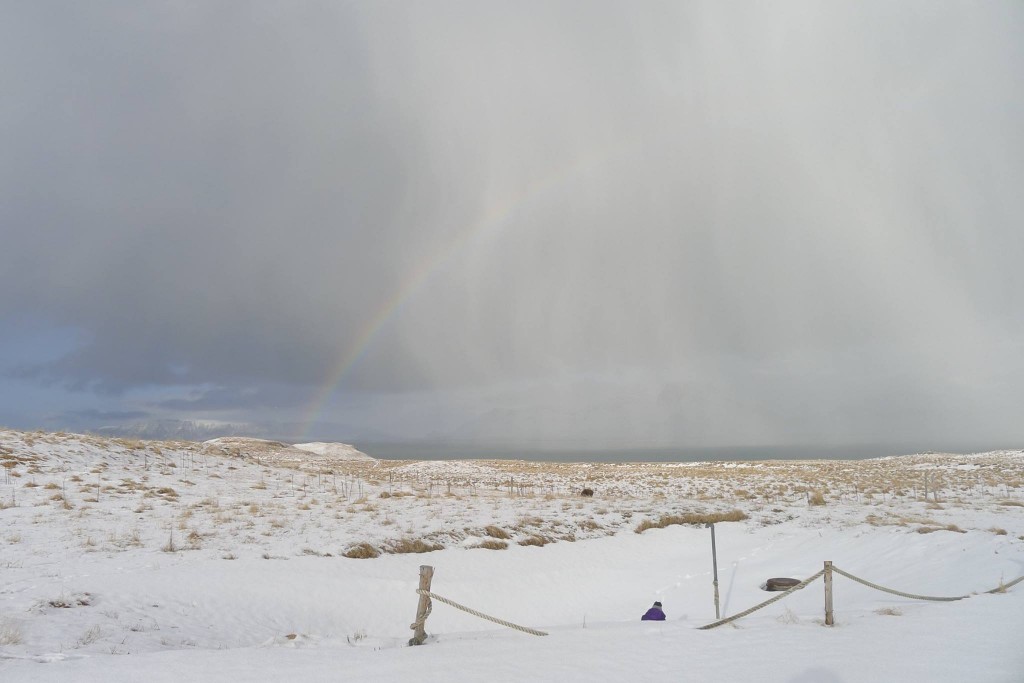
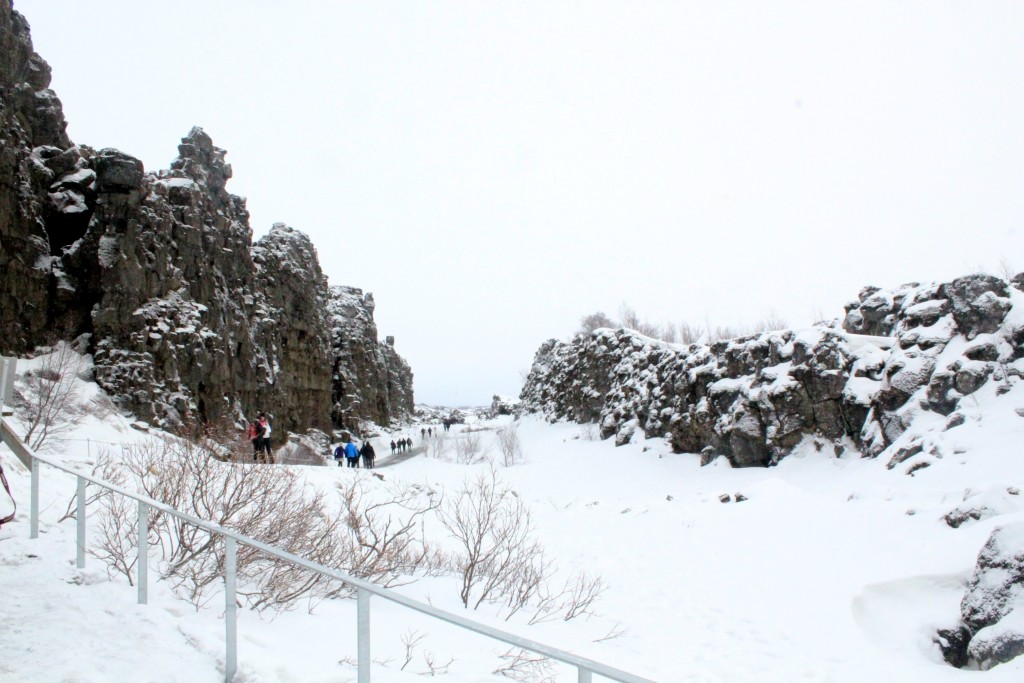
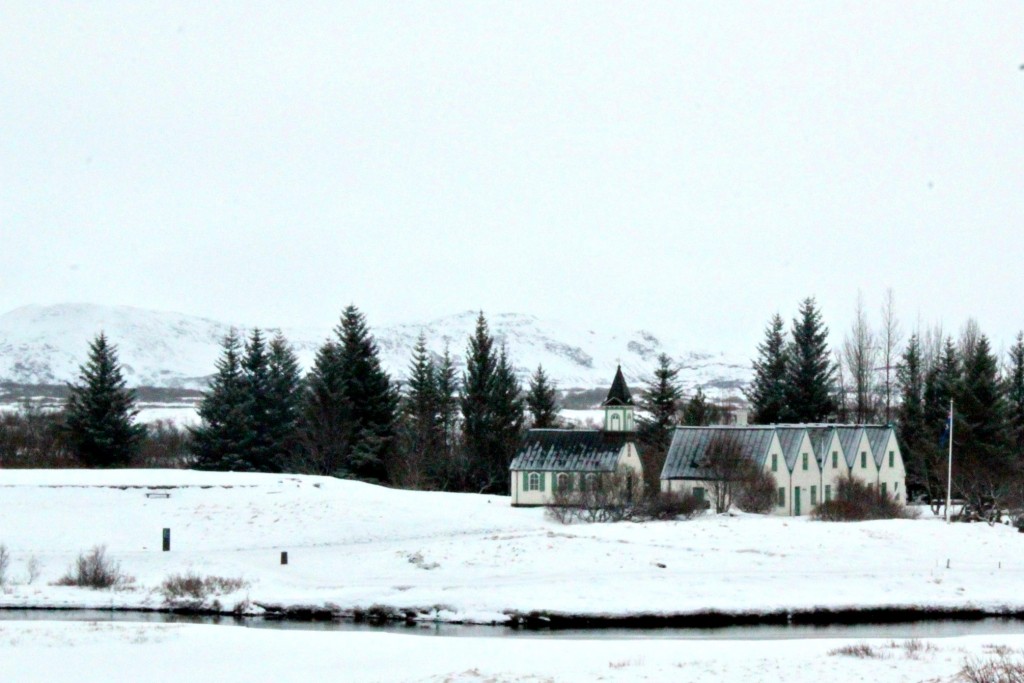
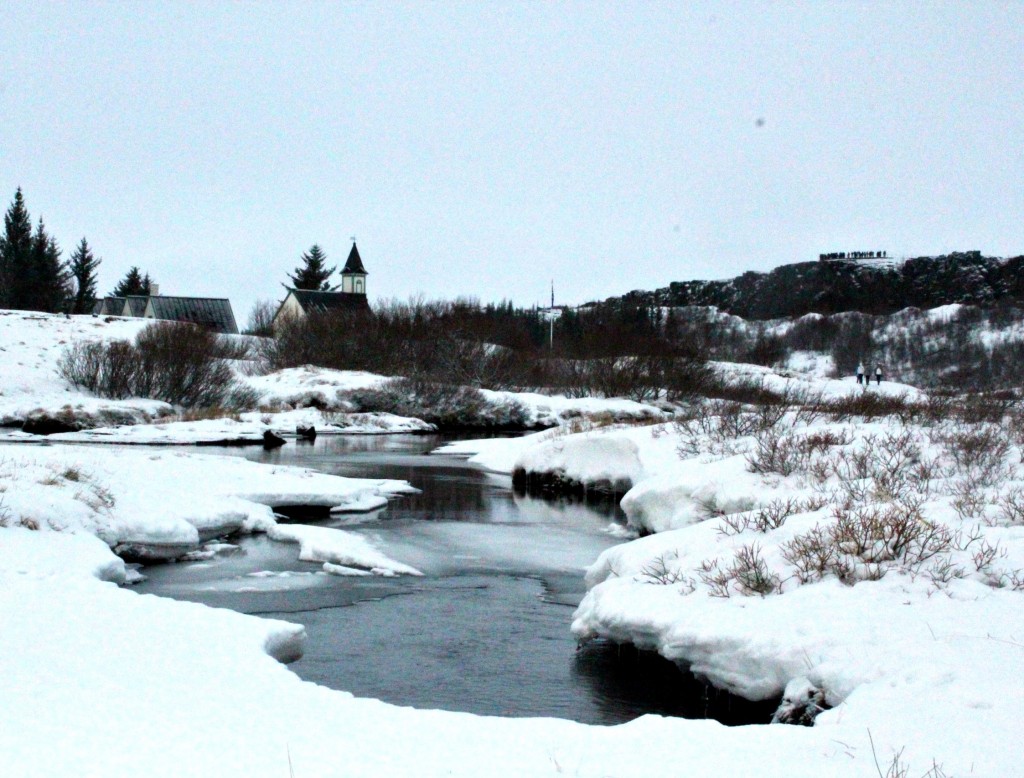
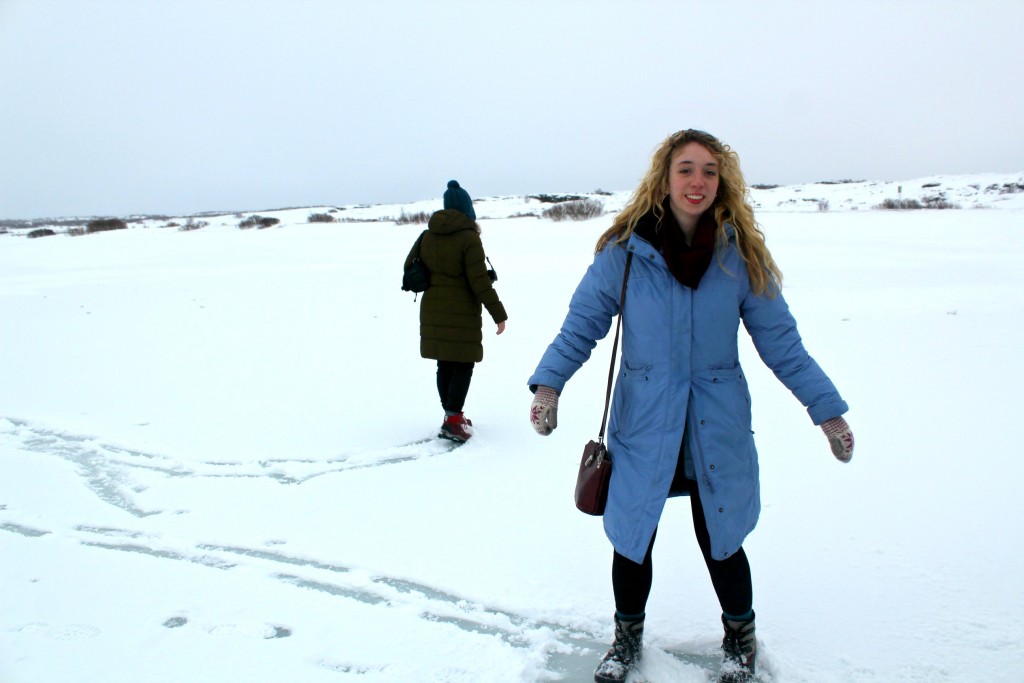
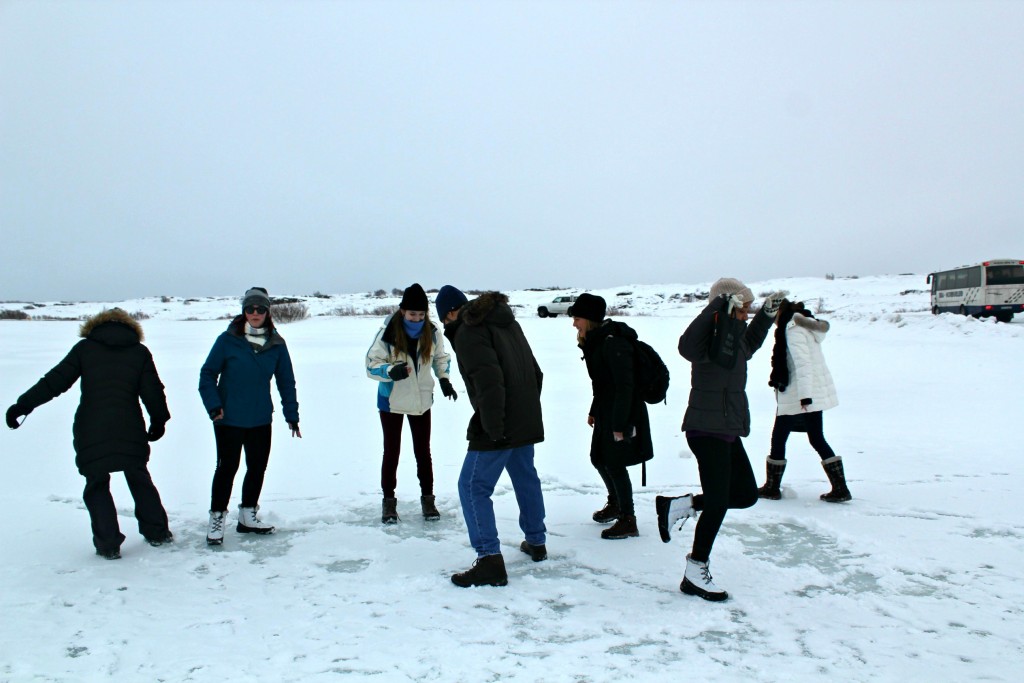
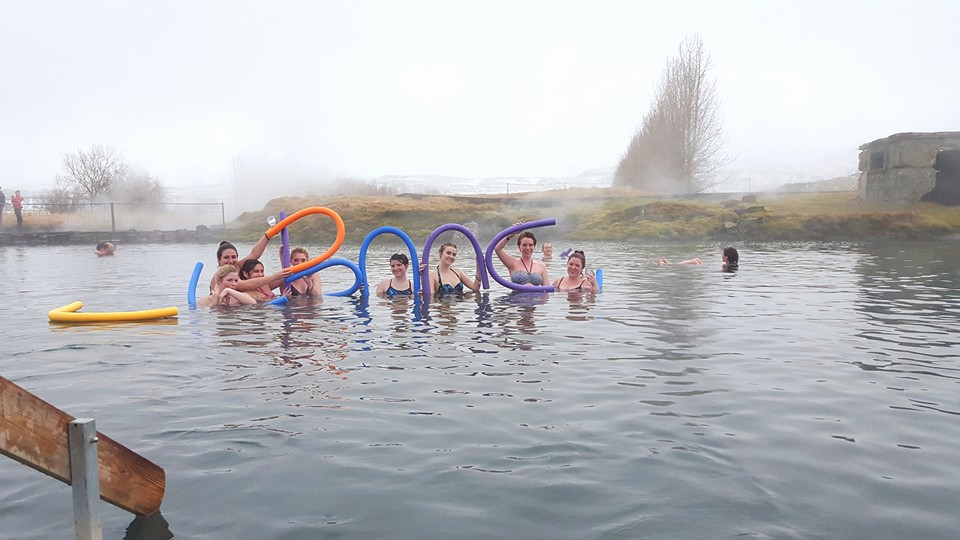
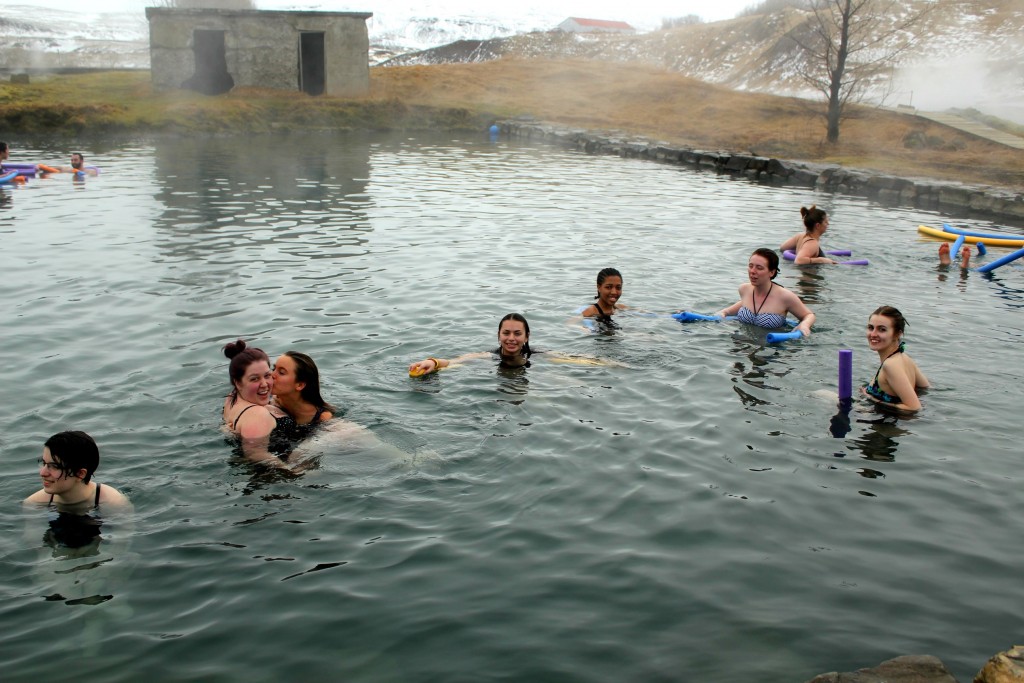
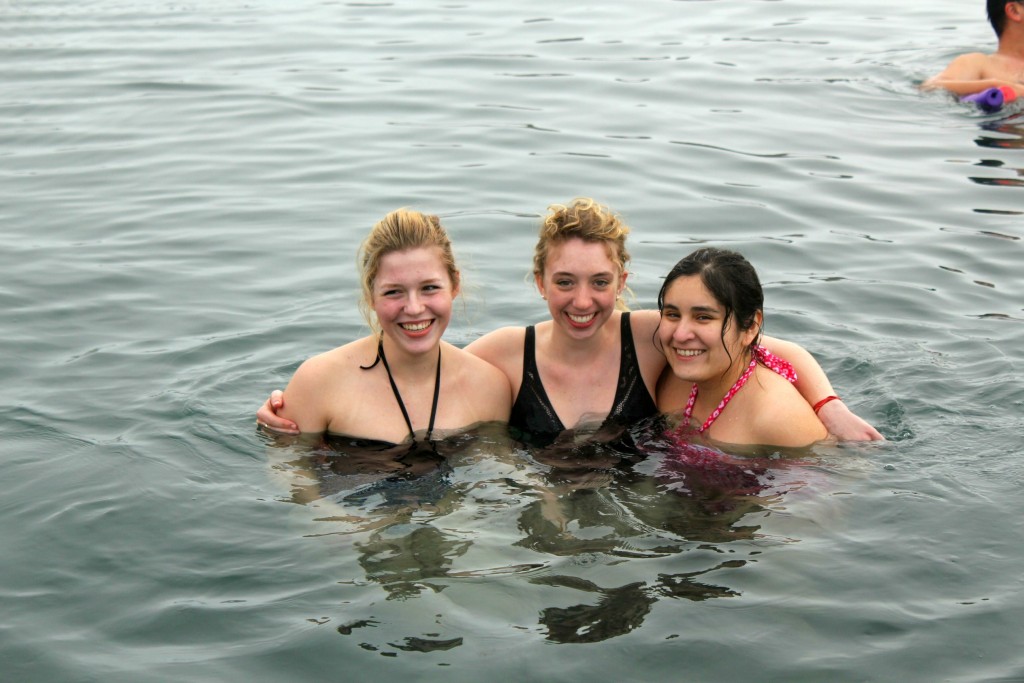 Some of our hearty students were able to last in the warmth of the pool for the full two hours! “I feel like my insides were boiled,” said Amelia.
Some of our hearty students were able to last in the warmth of the pool for the full two hours! “I feel like my insides were boiled,” said Amelia.